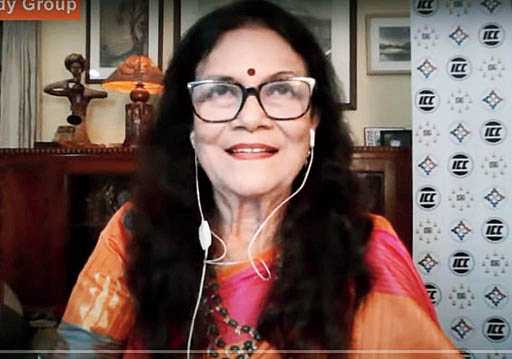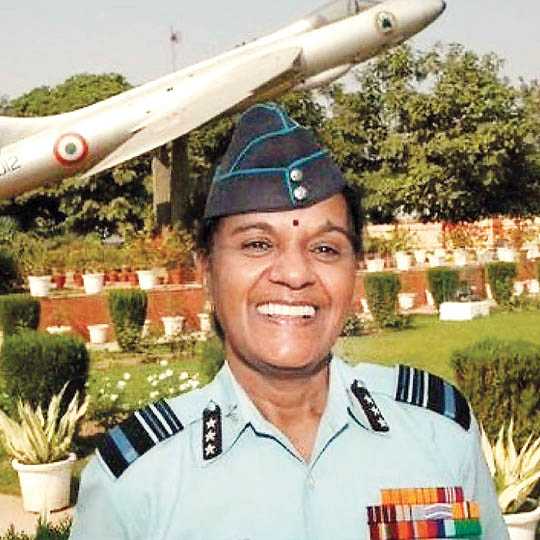One is the first female to be promoted to the rank of Air Marshal in the Indian Air Force (IAF) and the other two are among the first three female fighter pilots to get inducted into the flying forces. While the now-septuagenarian Air Marshal (veteran) Padma Bandopadhyay with multiple firsts under her belt has paved the way for Indian women, Flight Lieutenant Avani Chaturvedi and Flight Lieutenant Bhawana Kanth are both in their late 20s, making bigger strides for women to follow in their collective footsteps. But what binds them together is when they unanimously agree that “there is no other feeling like flying a fighter plane and serving your nation”.
“Nabhah sparsham diptam”, a Sanskrit shloka from the Bhagavad Gita, is the source of the motto of the IAF, which is “touch the sky with glory” and these three women have done it with valour and honour. The struggles may vary for each of them but they are united in their sense of responsibility and creating more firsts for women — as Bandopadhyay recalled, “I have been saying this from the beginning of my career in the IAF that men and women are the same and we are all here to serve our nation so it is great to see so many things changing since then.” To mark the 74th Independence Day of our nation, the Ladies Study Group got the three together virtually. Excerpts from a memorable session:
The path that led to IAF
Avani: I was born and brought up in Madhya Pradesh and did my schooling there. I did my Bachelor of Technology at Banasthali (university) and got an opportunity to fly during my time there. That is when I developed the interest for flying. A lot of my relatives are in the defence services so I always wanted to do that too. After joining the IAF, like all other cadets, we went though the same schedule and training and was fortunate enough to get the opportunity.
Bhawana: Everybody wants to achieve something and that is how it was for me too. It was a simple journey but I dreamt of doing something someday. I was fortunate enough to get this opportunity to join the IAF.
Choosing to become a fighter pilot
Avani: As a kid, I always wanted to be in the sky whenever I looked at it. Actually, I always wanted to be an astronaut and Kalpana Chawla was my idol. I used to keep all the cuttings of articles related to space science and aerospace. I learnt about wing commander Rakesh Sharma being an air force pilot who went to space so I thought that this was the way ahead. If you are in the air force and you get the chance to fly then why not fly as the best? When the opening for women fighter pilots came up, there was no doubt in my mind that I had to go for it. This is something the air force is meant for because you can do other kinds of flying elsewhere but fighter flying can only be done with the air force.
Bhawana: The sole motivation for me was flying and that was the only thing I had in mind. When I was a kid, I remember jets flying over my home town and we used to be so happy. I did not know which kind of aircraft it was but for me, it was always a jet and so the IAF always signified fighter jets for me. I always said that if I went to the air force, I wanted to fly a fighter jet only!
Training and rigour
Avani: As far as AFA (Air Force Academy) is concerned, it was very structured. For the first six months, we are groomed for the basic military bearing, which comprises physical activities, running, camp, parade, PT and more. Only after this is when you get to touch the aircraft. Initially we start flying Pilatus for six months and then our trifurcation is done based on our performance — all of us are trifurcated into helicopters, transport and fighters accordingly. After choosing the fighter stream, we go to Hakimpet and fly (HAL) Kiran Mk-I. We get commissioned after training at the academy for one-and-a-half years, when we stay at Bidar and Kalaikunda for six-eight months and fly trainer jets, which are Hawk Mk-132. So it was very structured and there were no different standards for us and our (male) counterparts — the syllabi and passing criteria were absolutely the same.
Bhawana: Apart from the structure, the course mates were the best part. The kind of bond that you develop makes you reminisce those days. Those are people who are practically your brothers and sisters in arms and it is the most fascinating thing about training in the academy.
“You never go to war alone”
Avani: Our daily lives are not very different from our colleagues — it is equally difficult and easy as it is for them. The cohesion in the squad is so good that you never feel left out and there is always someone ready to lend you a hand if you need. But there is a lot of things to study about in this profession and the scope of increasing our knowledge every day. So we have to study every day, discuss with people as fighter flying is something that cannot be done in isolation. You never go to war alone — it is always in cohesion.
Bhawana: Avani and I are still in squadron together and it is one of the best feelings to be brothers and sisters in arms and to be able to do the best for our country. It is all about the team work.
Flying solo in the MIG-21 Bison
Avani: It is a memory of a lifetime for me. My first sortie was of 22 minutes and I remember every single minute of it. The trainer aircraft is very different from the fighter aircraft — the feel is different and so is the instrument. It was very adventurous and after landing, you feel like you have done something good and you feel a sense of contentment. In air, you are on your toes and so don’t have the time to feel anything but it strikes you when you land.
Bhawana: Any Bison pilot will vouch for the fact that solo flying in it is the most epic feeling ever because to fly solo in a Bison, you train on a different trainer aircraft. So when you are going solo in a Bison, you are actually going solo in a new aircraft and that experience is a big deal for any fighter pilot who has ever flown in a Bison. You will never forget it.


It was a privilege to have an insider’s view into the lives of our women in the Indian Air Force. We heard with fascination the stories of their aspirations and inspirations, the dogged pursuit of their dreams, their dedication and commitment towards their training, their passion for their responsibility towards the country and its citizens,and above all their pride in themselves. They truly exemplified LSG’s theme of the year — Adaptability, Agility and Ingenuity — in their life’s journey
Sumita Roy, president, LSG
A road less travelled

Air Marshal (veteran) Padma Bandopadhyay
Padma Bandopadhyay: I was born in the temple town of Tirupati. I studied my pre-med in Delhi and got into AFMC (Armed Forces Medical College). I did not know how to speak in Hindi then and during the parade, would often raise my left hand when I was supposed to raise the right. I learnt everything slowly. I used to love watching aircraft fly and that tempted me to join the air force as a doctor. I had applied for flying but they made me unfit so I got very angry and decided to study aviation medicine. That is when the firsts start as I was told that I was the first woman to study that.
Nobody would tell me anything when I checked them (air force members) but it took some time for them to open up to me. Whichever squadron I went to; I would fly with my squadron commander so that we got used to each other. I would make it a point to learn everything about the aircraft from the point of view of a doctor because that was my job and I wanted to be able to help the pilot to the best of my ability. My husband and I have a record that we got a Vishisht Seva medal together — first armed forces couple to get it together on the same day and at the same ceremony because of the 1971 war. In those days, husband and wife were never posted together. In fact, in those days, if you were married, you could be out of service so these big changes take time. Someone told my husband and me that if we did staff college, we could be posted together. We did that and I became the first woman to go to staff college. One of the generals there would be like: “Good morning, gentlemen” and then look at me and say, “sorry, lady”. I would tell him to call me an officer because we were all officers — it doesn’t matter. I learnt a lot there and so much about the tactics of fighter pilots.
I went to many squadrons after that and had the good fortune of working with a DRDO unit. That led me to an opportunity to go to the North Pole to study the effects of extreme cold. I am a casualty evacuation expert and was stationed at Bareilly once. Once during the summer heat there, we had an emergency patient to transport from the hills where it was snowing. We had to stay the night and take off only the next day. The trip of the Arctic was very useful as it taught me a lot about acclimatising the Indian soldiers. I remember seeing the Aurora Borealis also and nobody knew these things then but my driver just stopped the car and showed me. I am a pure vegetarian brat and during my six months there, I lived only on bread and pickle.
Promotions are very difficult within the armed forces and it is not my becoming the first female Air Marshall that is important. What is important is the contribution of my colleagues, my family of the Indian Air Force and their families too. You will never find the kind of unity as in a squadron anywhere else. The life you lead in this uniform, the family feeling you get here, is phenomenal. We are all one — the real secular India! Nobody comes to the airfield but my fellow compatriots and they were always there to support me. It is a great feeling to wear the uniform.
